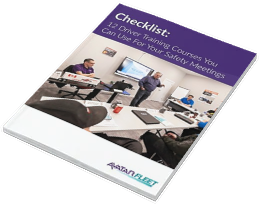![]()
In 2016, the federal government passed sweeping regulations that could drastically change the face of the transportation industry. These regulations are called Map 21. Now, three years later, the industry waits with bated breath. A recent article from Transport Topics explains that Map 21 has been delayed due to a technical glitch in its online system. It’s coming, but we don’t know when.
What Does All of This Mean For Transportation Companies Around the Country?
One of Map 21’s goals is to improve safety. It’s a huge, complicated federal regulation, but there are three ways it plans to achieve this goal that directly affect day-to-day operations for many companies:
- Certain subjects must be covered with new drivers/operators in on-boarding and training. They don’t specify time-on-task, but they do demand that you confirm “proficiency.”
- All instructors must have two years of CDL experience and be entered into a national database. This is what spurred the delay. There is an IT glitch that prevents people from doing so currently.
- Many operators must have a Safety Management System showing specific exposures their operators face and specific directly-related risk-mitigating behaviors they should take to take to reduce them. This can be as simple as a poster.
There are many arguments on both sides for whether or not this will be helpful. On the one hand, increasing the minimum experience of an instructor could lead to improved training. However, many feel the new requirements are arbitrary and only hamper growth. Moreover, a clause in the regulation will allow new drivers to be behind the wheel sooner, even before they pass a CDL exam.
What Should You Do in The Meantime?
We don’t know when Map 21 will be in effect. The prudent course of action is to assume it will still happen February 2020. What should you do to prepare for it? In short, you should double down on your training efforts. We recommend the following approaches:
- Self-directed online training courses such as A-Fleet Professional Driver Training can help ensure that you cover the minimum training requirements under Map 21. Online courses like A-Fleet allow for maximum flexibility and cut down on both accidents and orientation time for your drivers.
- Implement an instructor certification program like LLLC. Under Map 21, your instructors need at least two years on the job before they can train new drivers. However, those two years don’t ensure they’re actually qualified. Having an instructor certification process in place will give your people the tools they need to succeed
No one has all of the answers when it comes to Map 21. We don’t know when it will be here or even exactly what it is. However, regardless of what happens, any company stands to gain a lot from improved defensive driving training.
Sign up to our newsletter
Get the latest articles on all things transportation delivered straight to you inbox.
Schedule a live demo

